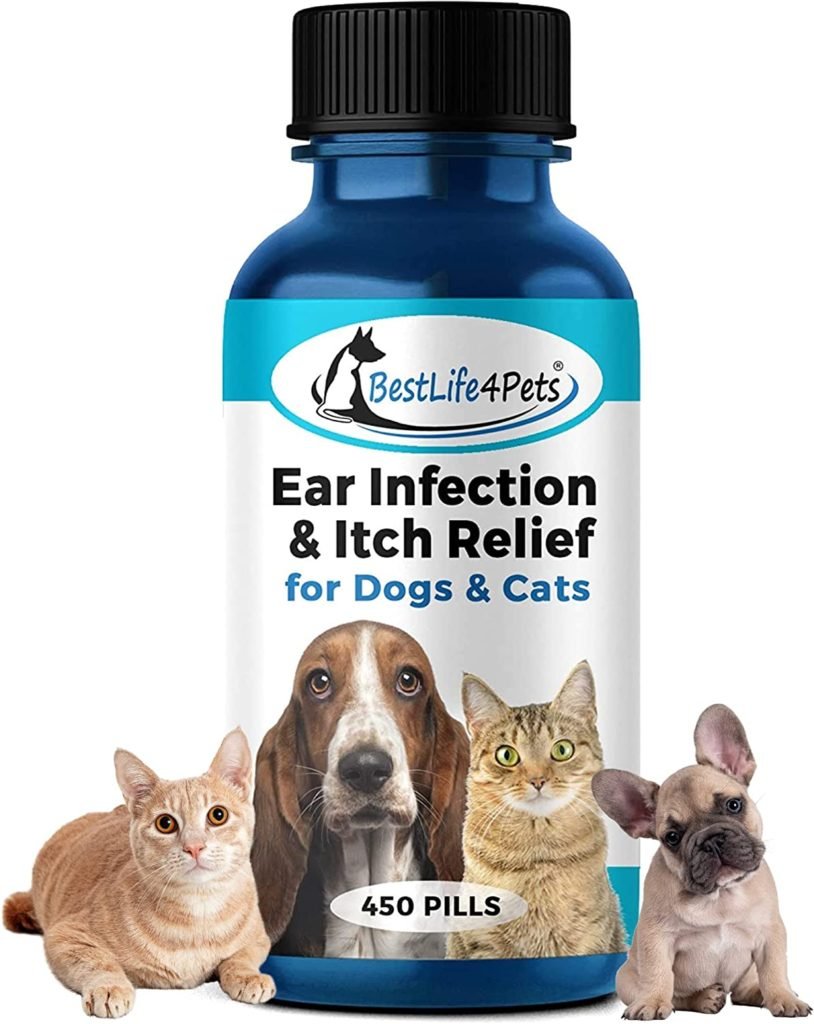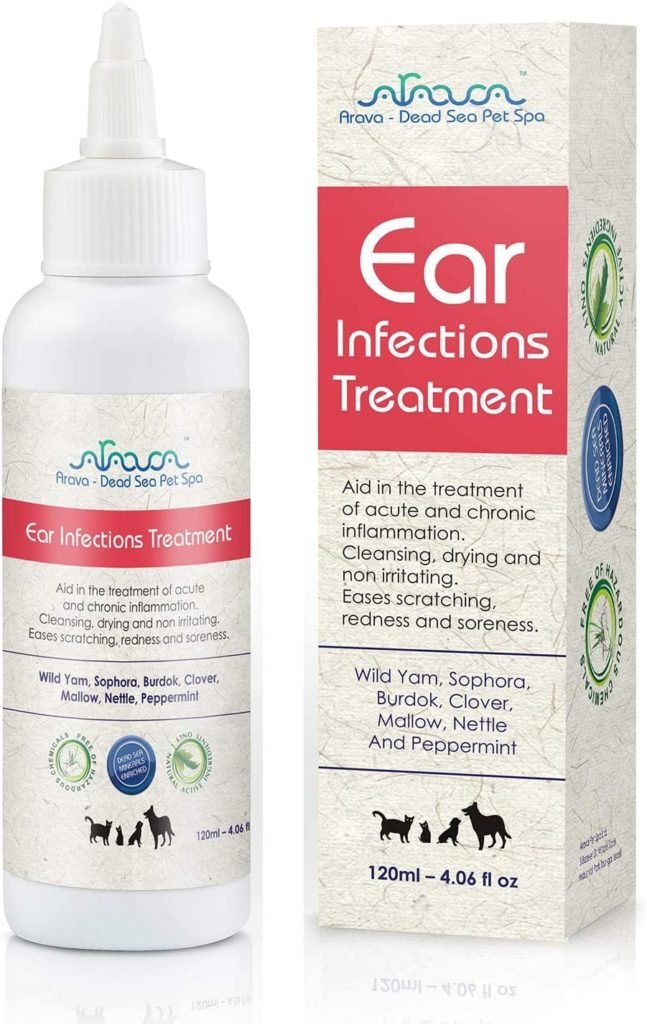Dog ear infections can be an uncomfortable experience for your pet. Learn about the causes, symptoms, and treatment options to keep your pup healthy. This article will discuss everything you need to know about ear infections in dogs.
Causes of Ear Infections in Dogs
Various factors might contribute to a dog developing an ear infection, such as a bacterial or yeast overgrowth, an allergy, a foreign item lodged in the ear, or even a hormonal imbalance.
Other potential causes of ear infections in dogs include:
- Ear mites: These microscopic parasites are known to irritate and inflame the ear canal, which can then lead to an ear infection.
- Trauma: Ear injuries, such as a cut or puncture wound, might increase the likelihood of an ear infection.
- Immune system weakness: Dogs with weakened immune systems may be more susceptible to ear infections.
- Moisture in the ear: Water trapped in the ear after swimming or bathing can create a breeding ground for bacteria or yeast.
- Ear anatomy: Due to the structure of their ears, some dogs, such as those with long or floppy ears, may be more prone to ear infections.
- Genetic factors: Some dogs are more prone to ear infections due to hereditary factors.
It’s important to note that ear infections in dogs can have multiple causes, and it may be necessary to address various factors to treat the disease effectively.
Symptoms of Dog ear infections
Identifying and Treating Ear Infections in Dogs
If your dog is experiencing an ear infection, you may notice:
Symptoms
- Head shaking or tilting
- Ear scratching or rubbing
- Odor from the ear
- Redness or swelling
- Discharge from the ear
If you suspect an ear infection, visit the veterinarian for:
Diagnosis
- Physical examination
- Sample collection for testing
It’s crucial to follow the veterinarian’s instructions and complete the entire course of medicine to ensure the infection is completely eliminated. Additionally, regular ear cleaning and grooming can help prevent future ear infections. Don’t hesitate to seek veterinary care if you suspect an ear infection in your dog.
You May Also Interest: Distemper in Dogs: Understanding the Symptoms and Prevention
Treating Dog Ear Infections
If your dog has an ear infection, your veterinarian may:
Perform a Physical Examination
- Collect a discharge sample for testing.
- Determine the source of infection.
Offer a Treatment Plan
- May include antibiotics or antifungal ointments.
- Ear cleaning with approved solution advised.
- Allergy therapy may be necessary.
Follow Treatment Plan
- Finish the entire course of medicine.
- Stick to veterinarian’s instructions.
- Ensure complete elimination of disease.
Prevention of Dog Ear Infections
Here are some preventative measures for dog ear infections:
Cleaning your dog’s ears will help prevent excess wax and debris from accumulating, which can serve as a breeding ground for germs or yeast. Consult your veterinarian for the best frequency and technique for cleaning your ears.
Keep your ears dry
Moisture trapped in your ears after swimming or bathing might increase your chances of getting an ear infection. To help avoid this, gently wipe the inside of your dog’s ears after swimming or bathing, or use an ear-drying solution as directed by your veterinarian.
Irritating things, such as chemicals or pollen, should be avoided since they might irritate your dog’s ears and raise the risk of infection.
Preventative medications
If your dog is prone to ear infections, your veterinarian may advise you to use preventive medications to help minimize the chance of infection.
Regular ear checks
If you check your dog’s ears often, you can catch any issues before they become chronic and provide your dog prompt treatment.
You can help keep your dog’s ears healthy and infection-free by following these preventative strategies and getting early treatment if an infection is detected.
You May Also Interest: Don’t Ignore Your Dog’s Dental Health: Here’s How to Clean Their Teeth
Essential tips for cleaning dog's ears
Regular pet owner ear cleanings should focus on the external ear canal. If you want to know how to clean a dog’s ears, a veterinary technician or your veterinarian can guide you through the steps below.
Materials You will need cotton balls (never use cotton swabs because you can hurt your furry friend if they move) and an ear cleaner
10 easy steps to clean your dog ears
- Using cotton balls to remove visible debris in the ear canal is essential. That is usually wax and, sometimes, an excess of hair. Excess hair is typical in many breeds, including terriers and poodles.
- You can ask another person to help clean your dog’s ears, as it may be necessary to hold them lightly. Most dogs do not like having their ears cleaned too much!
- Carefully place the edge of the bottle dispenser directly into the entrance of your dog’s ear, or soak the cotton balls in the cleaner (my favorite tip). Warm the cleaner by leaving it on the kitchen shelf to reach room temperature.
- Gently squeeze the cleaner (or the cotton balls) until you see the liquid in the ear canal opening.
- Then, massage the ear while holding the ear flap (the ear), pulling it up to avoid the usual shakes of dogs. This massage breaks down dirt residues. Then, remove these residues.
- Gently clean the ear with dry cotton balls. You will pick up some residues as you tend the ear canal.
- Continue cleaning the ears until the residues disappear.
- Repeat this until all dirt residues have disappeared.
- Step back and let the dog shake! Dry the ear with cotton balls to ensure no moisture is left in the canal.
- Move on to the next ear, rinse and repeat.
Homemade remedies for ear infections in dogs
Natural Remedies for Dog Ear Infections
When it comes to treating otitis in dogs, there are natural alternatives to consider. Here are a few:
Tea Tree Essential Oil
- Kills bacteria and fungi
- Apply 2-3 drops daily
- Mix with sweet almond oil for damaged ears
Hot Compresses
- Decreases inflammation and pain
- Improves tissue irrigation
- Apply several times a day with a hot, damp towel
Garlic Maceration
- Crush 2 cloves of garlic in olive oil
- Strain mixture and add 5 drops to ear
- Administer daily
Aloe Vera
- Decreases inflammation and pain
- Apply directly to ear 2x daily
- Use pure aloe vera juice
Homemade Antiseptic Solution
- Mix equal parts hydrogen peroxide, water, and apple cider vinegar
- Soak cotton swab and clean affected ears
- Use for external ear infections only
Remember to take caution when using hydrogen peroxide, as it can worsen pain if it enters the ear. If you have doubts about treatment or your dog’s otitis is severe, consult with a veterinarian.
You May Also Interest: Don’t Let Fleas Ruin Your Dog’s Health: Here’s How to Prevent and Treat Them
In conclusion, canine ear infections are annoying at best and unpleasant for the canine patient. Nonetheless, they are readily controlled with the proper care and preventive. Let’s say you’ve seen sure signs of an ear infection in your dog. In such a scenario, a trip to the vet for a thorough examination and treatment plan is required. If you take the advice of your vet and take measures to avoid future illnesses, your pet will remain healthy and happy for the rest of its life.



